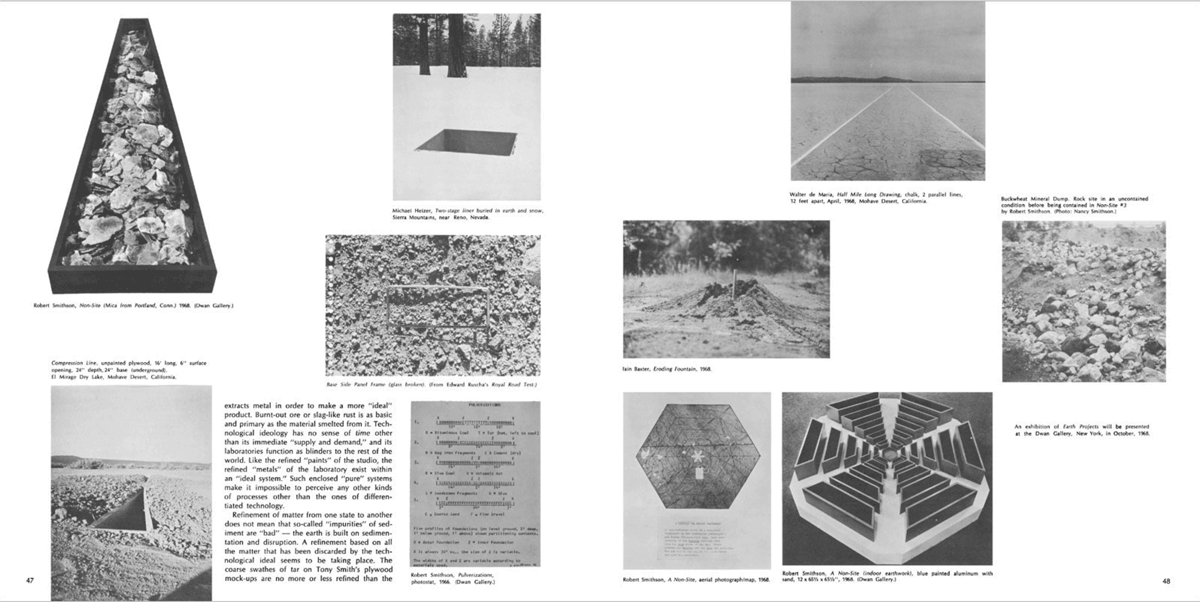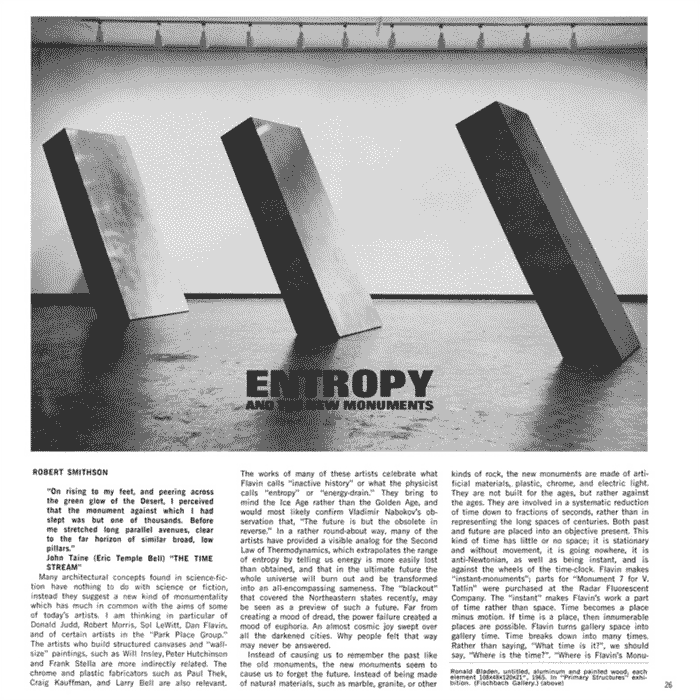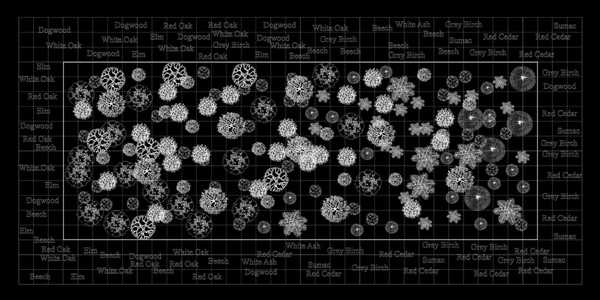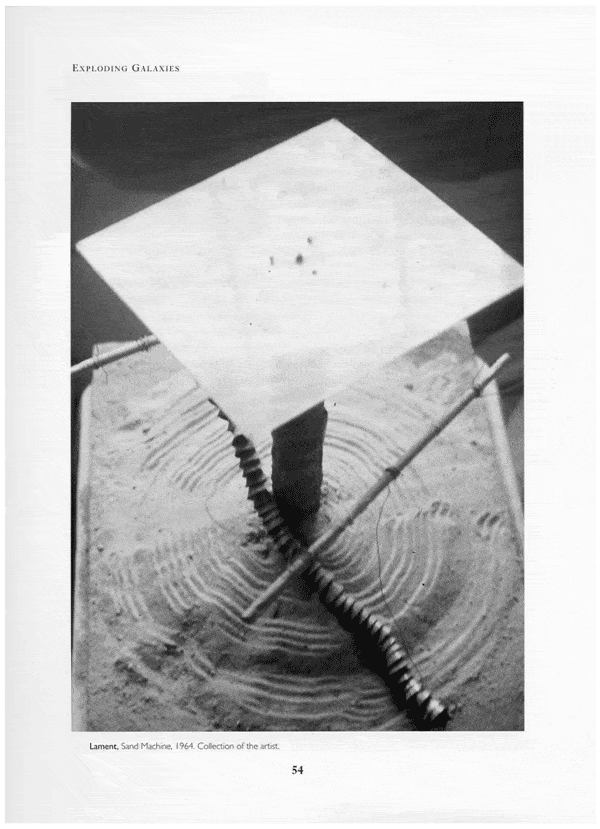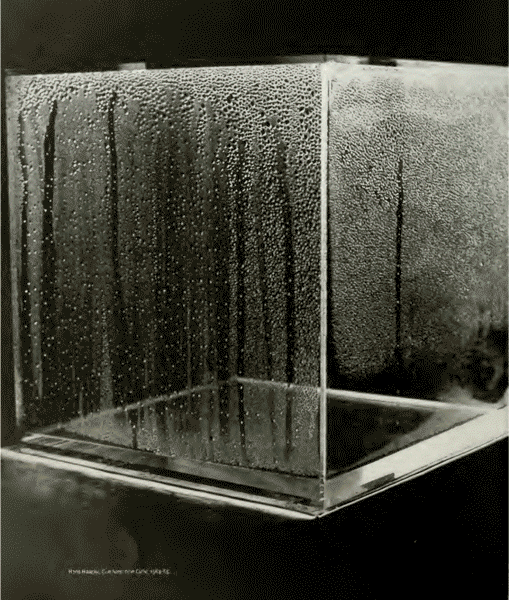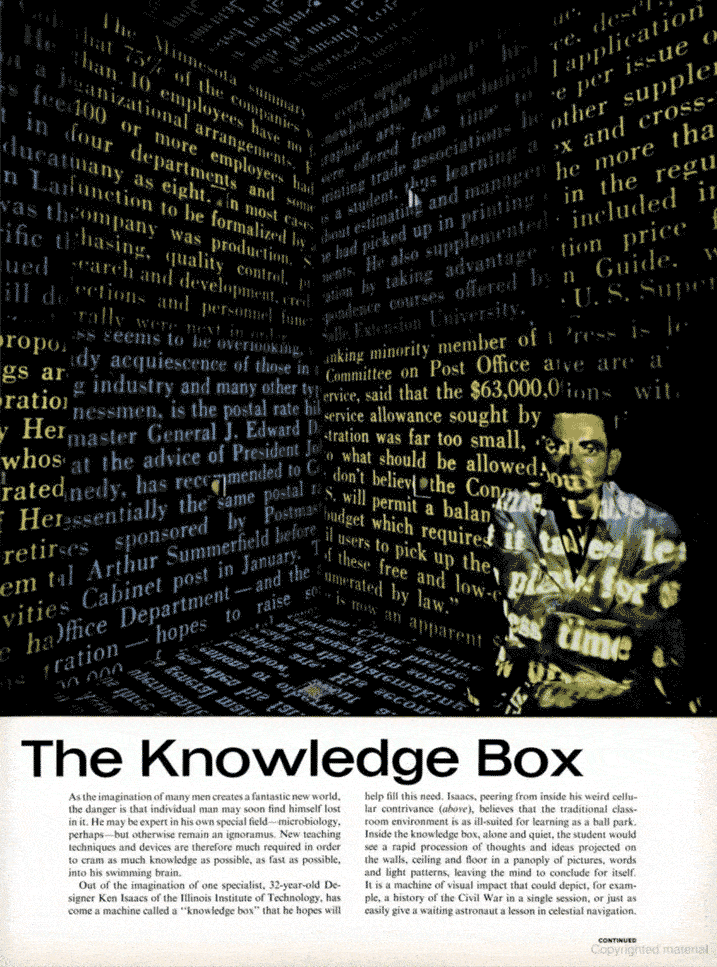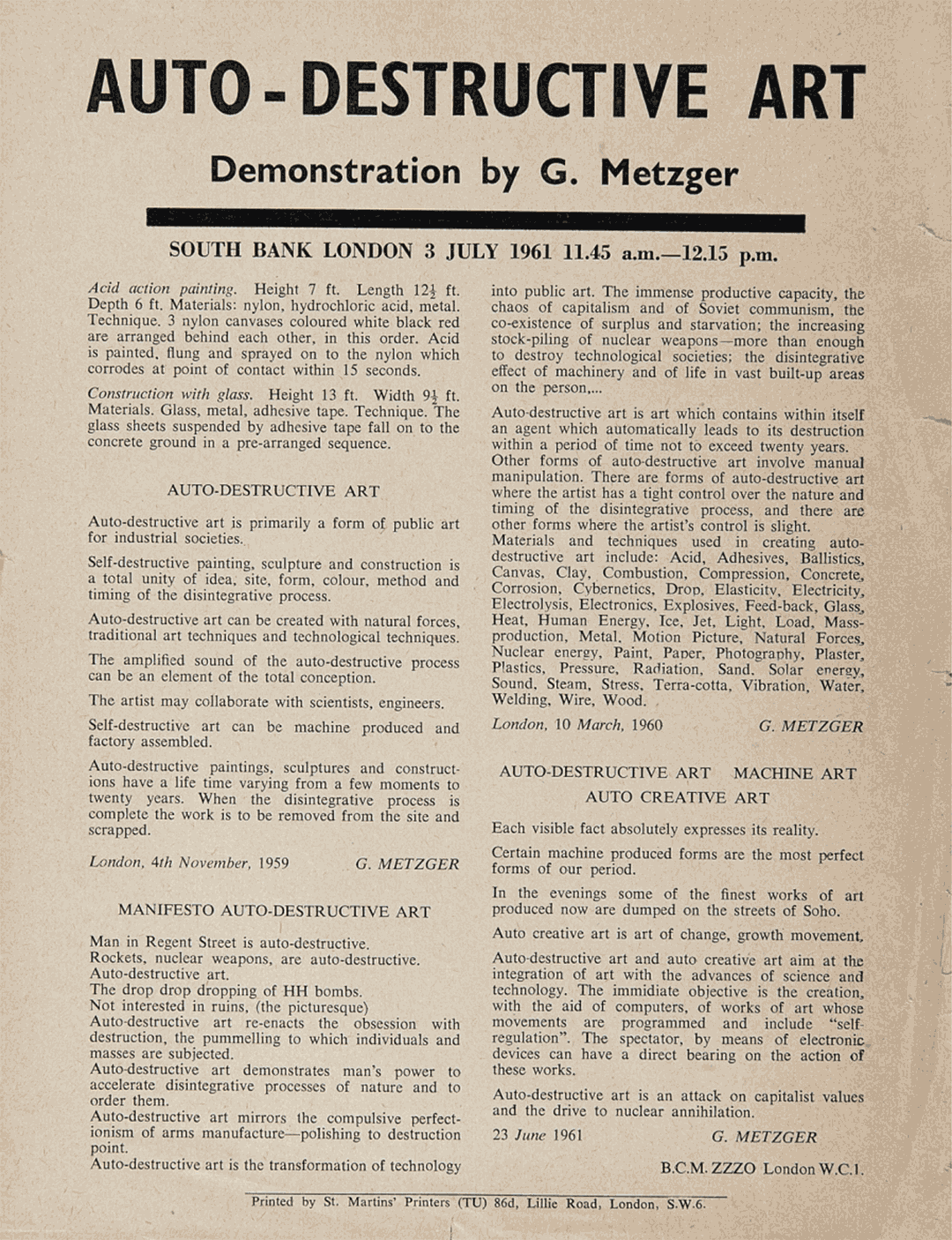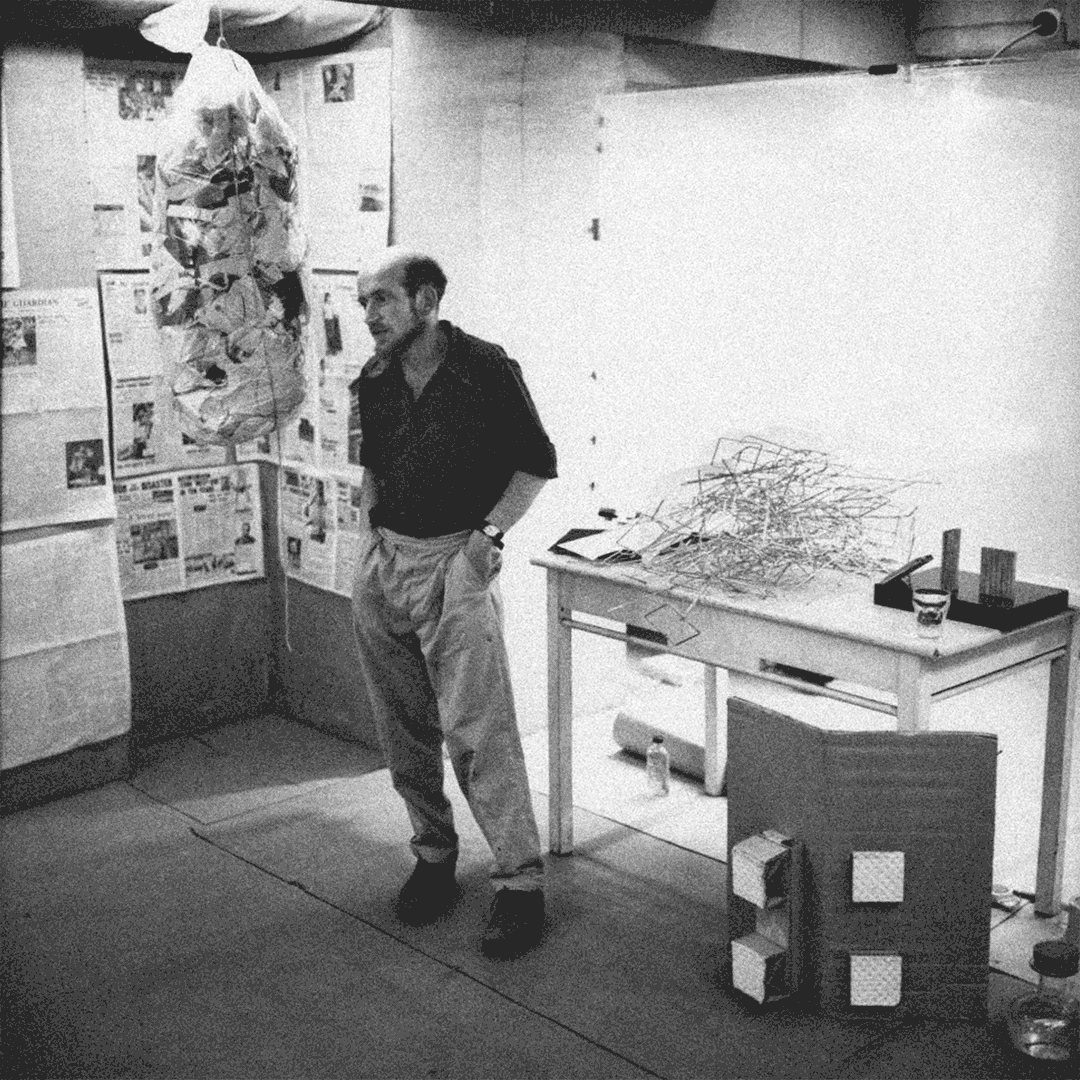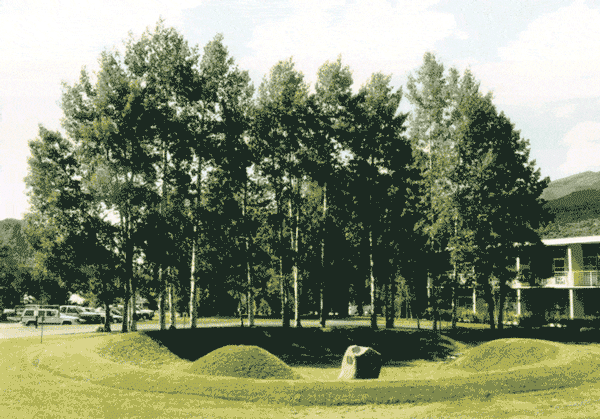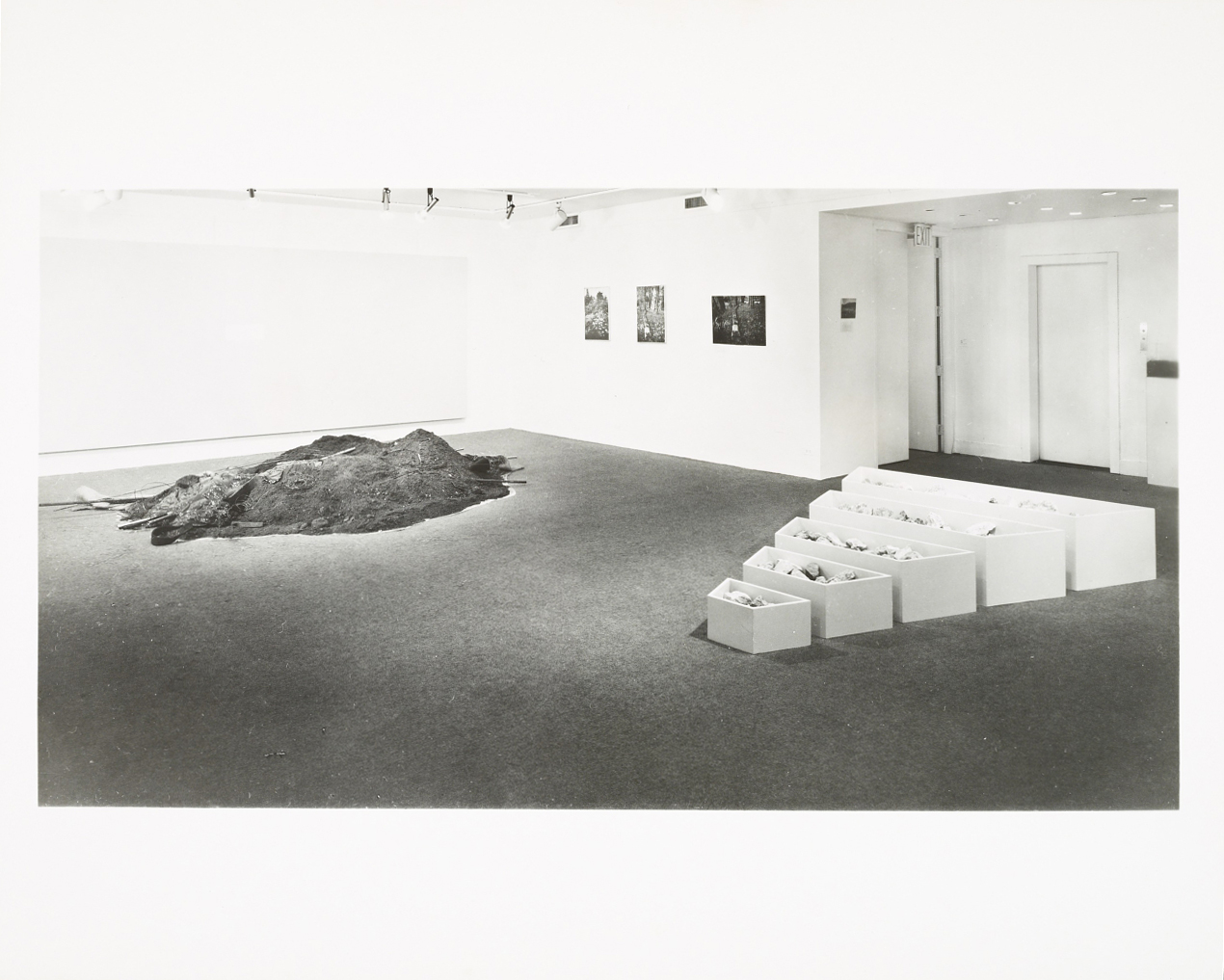
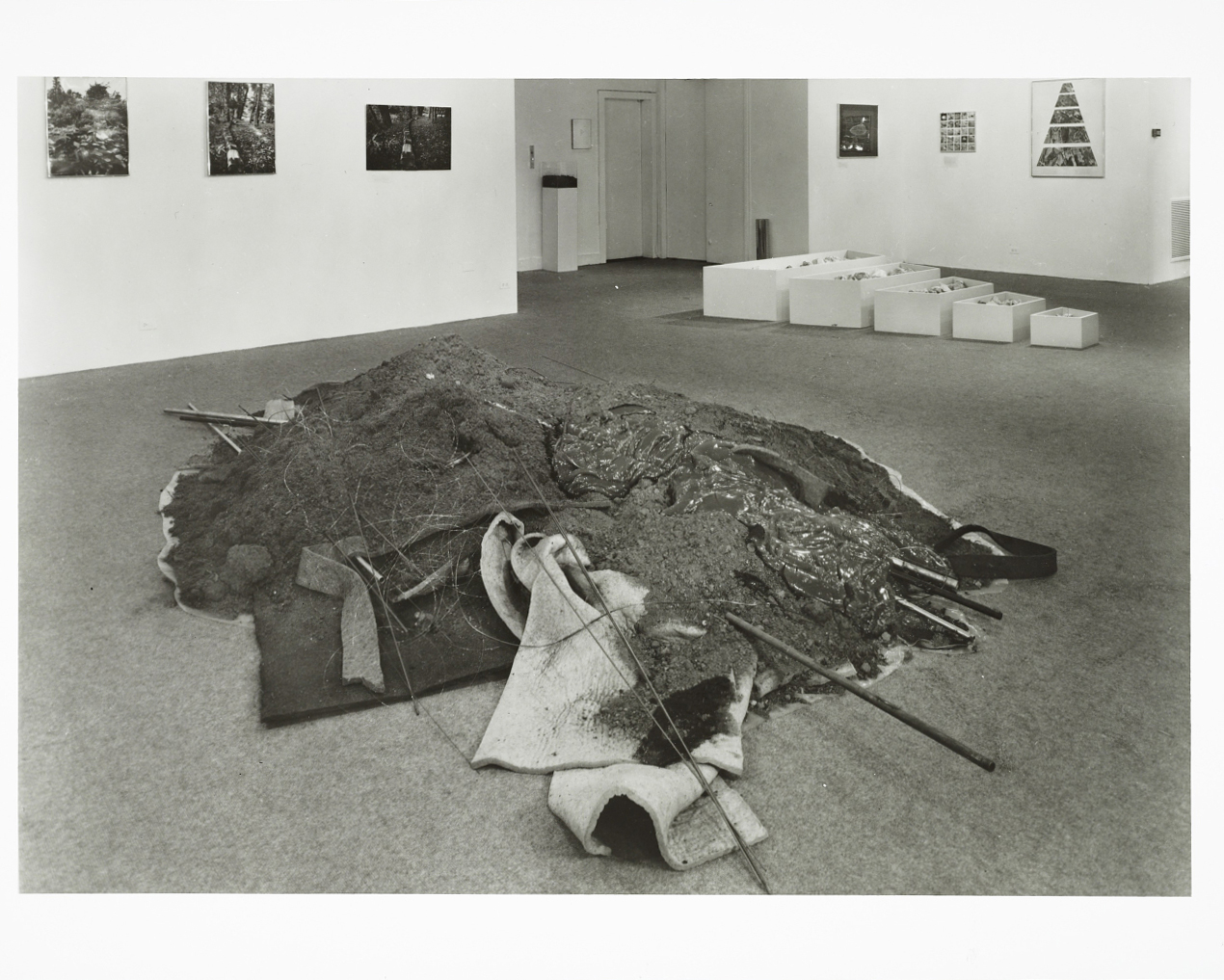
|
Exhibition views of “Earth Works” (also known as “Earthworks”), by Robert Smithson, with works by Smithson and Robert Morris in the foreground. Dwan Gallery, New York, N.Y., October 1968. |
|
|
|
|
Exhibition announcement for “Earth Works” published by Dwan Gallery, New York, N.Y., October 1968. Retrieved here, June 2021. |
|
“In New York, many artists started reaching out to me; several were making interesting, contemplative, and quiet works. I thought that so many of these artists were wonderful, but I couldn’t show them all. I hated visiting studios and seeing people’s work for that reason. Still, I realized that I could help artists in different ways. In 1969, Robert Smithson told me that he wanted to do something at the airport in Fort Worth, Texas, and that he was involved with some engineers who were going to be working there. He had asked Carl Andre and Sol LeWitt and Robert Morris to also propose works for the airport site but then the project fell through. Nevertheless, Smithson, Nancy Holt, and I began to look at sites around New York and New Jersey and further south into Virginia. We ended up taking a number of trips together in search for land on which to make works. In 1968, when we could not find land that was available, we were inspired to organize the ‘Earth Works’ show in the gallery.”
|
Virginia Dwan — Interview, Artforum (February 11, 2014). Accessed here, June 2021. |
|

Earth Works
Echoing the “Groundworks” timeline: 1968
“Earthworks represent a special and conceptual involvement with literal nature and it is not an accident that almost every artist in the show exhibited 'minimal' art in seasons past. Either passages of landscape are turned into art or object-art is turned into a kind of landscape, or object and landscape are combined in a way that is both esthetic and atavistic. Dennis Oppenheim proposes to mow rings up to ten miles wide in the wheat fields surrounding an active volcano in Ecuador next July, whereas Robert Morris assembles, in a gallery, and for one time, a compost of dark soil, a profusion of pipes, lengths of felt and a gelatinous mass of thick industrial grease. Other varieties of the literalist landscape experience, either illustrated or actually shown in the exhibition, include the vast parallel lines drawn across a Western wasteland by Walter de Maria, and a gallery in Munich with wall-to-wall dirt, also by de Maria. Rough-hewn blocks of wood by Carl Andre were illustrated snaking through forest underbrush; Michael Heizer dug slit trenches in forests and sun-baked mud flats. Claes Oldenburg showed some dirt in a plastic container; the dirt was said to be seeded with worms. The hole he had dug and filled up again behind the Metropolitan Museum of Art was presented on film.
What I think is involved in earth art in particular and actual media art in general is a 20th-century version of the picturesque. The picturesque was a theory of landscape that emerged in the late 18th and early 19th centuries, especially in England. As the word itself implies, the picturesque referred to landscape seen in an essentially pictorial way. Landscapes were judged for their pictorial beauties and the same effects in painting were highly praised. In other words it was a way of seeing nature and the setting was very important. An extensive body of literature describing and illustrating picturesque tours came into being.
…
As the 20th-century form of the picturesque, Earthworks signify an analogous degree of over-cultivation of the modernist idiom. And it implements the condition of over-refinement in the course of seeking to renew modernism by a direct involvement with ‘actual’ media, an involvement that has run the gamut from wood, metal, plastics, the entire industrial process and now common dirt. It thus links up with Pop art as a kind of precious primitivism seeking revitalization through willful banality. And like Pop art, it is effective only insofar as it confirms the stylistic attrition it seeks to reverse."
Sidney Tillim — “Earthworks and the New Picturesque”, Artforum, vol. 7, no. 4 (December 1968), New York, 43. Accessed here, June 2021.
|
Founded by Dwan in a storefront in Westwood in 1959, the Dwan Gallery was a leading avant-garde space during the 1960s, presenting ground-breaking exhibitions by Edward Kienholz, Yves Klein, Franz Kline, Claes Oldenburg, Robert Rauschenberg, Ad Reinhardt, and Robert Smithson, among others. A keen follower of contemporary French art, Dwan gave many of the Nouveau Réalistes their first shows in the U.S. In 1965 she established a second space in New York City; Dwan New York would go on to provide the first platform for now-major tendencies in the history of contemporary art including Minimal Art, Land Art, and Conceptual Art. |
“maat Explorations” is an ongoing programme that delves into the socio-cultural and environmental transformations stemming from the current bio crisis and ecological destruction. It provides an insight into the hard science of climate intervention and the creative speculations behind innovation-led research to safeguard our planetary co-existence.
Prominent in this strand is the installation Earth Bits – Sensing the Planetary, that opens access to the complex interconnectedness between the environmental and the energetic quests and its reverberation through decades of artistic production, political and cultural movements traced from the 1960s until today. On maat ext., a series of #groundworks hashtags introduce the critical explorations that feed into the complex interconnectivity between the environmental and energetic quests, and its reverberation through decades of artistic production, political and cultural movements traced from the 1960s until today. |



